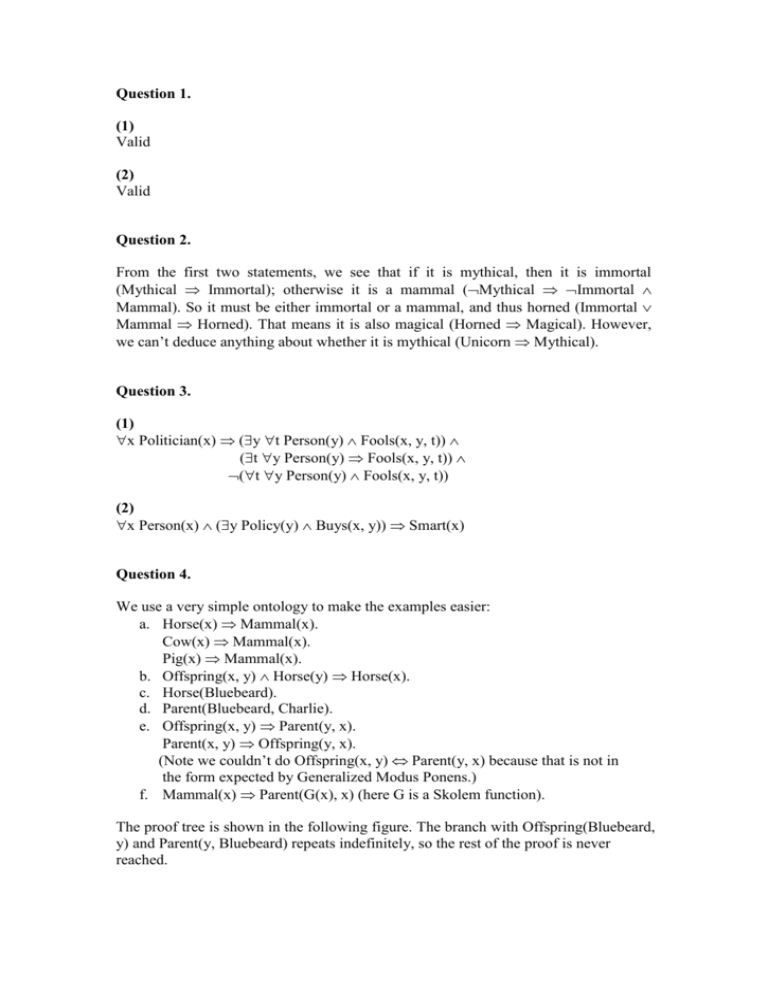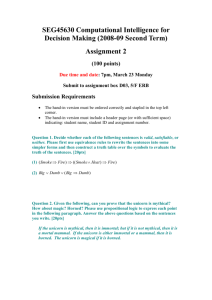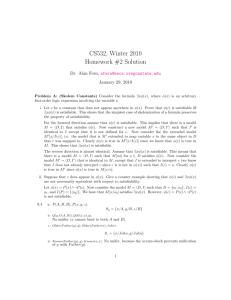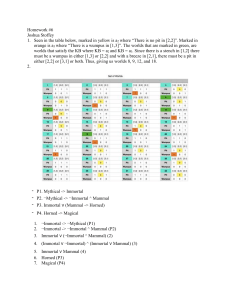offspring horse
advertisement

Question 1. (1) Valid (2) Valid Question 2. From the first two statements, we see that if it is mythical, then it is immortal (Mythical Immortal); otherwise it is a mammal (Mythical Immortal Mammal). So it must be either immortal or a mammal, and thus horned (Immortal Mammal Horned). That means it is also magical (Horned Magical). However, we can’t deduce anything about whether it is mythical (Unicorn Mythical). Question 3. (1) x Politician(x) (y t Person(y) Fools(x, y, t)) (t y Person(y) Fools(x, y, t)) (t y Person(y) Fools(x, y, t)) (2) x Person(x) (y Policy(y) Buys(x, y)) Smart(x) Question 4. We use a very simple ontology to make the examples easier: a. Horse(x) Mammal(x). Cow(x) Mammal(x). Pig(x) Mammal(x). b. Offspring(x, y) Horse(y) Horse(x). c. Horse(Bluebeard). d. Parent(Bluebeard, Charlie). e. Offspring(x, y) Parent(y, x). Parent(x, y) Offspring(y, x). (Note we couldn’t do Offspring(x, y) Parent(y, x) because that is not in the form expected by Generalized Modus Ponens.) f. Mammal(x) Parent(G(x), x) (here G is a Skolem function). The proof tree is shown in the following figure. The branch with Offspring(Bluebeard, y) and Parent(y, Bluebeard) repeats indefinitely, so the rest of the proof is never reached. Question 5. a. x Horse(x) Animal(x) x, h Horse(x) HeadOf(h,x) y Animal(y) HeadOf(h,y). b. A. Horse(x) Animal(x) B. Horse(G) C. HeadOf(H,G) D. Animal(y) HeadOf(H,y) (Here A comes from the first sentence in a. while the others come from the second. H and G are Skolem constants.) c. Resolve D and C to yield Animal(G). Resolve this with A to give Horse(G). Resolve this with B to obtain a contradiction.









